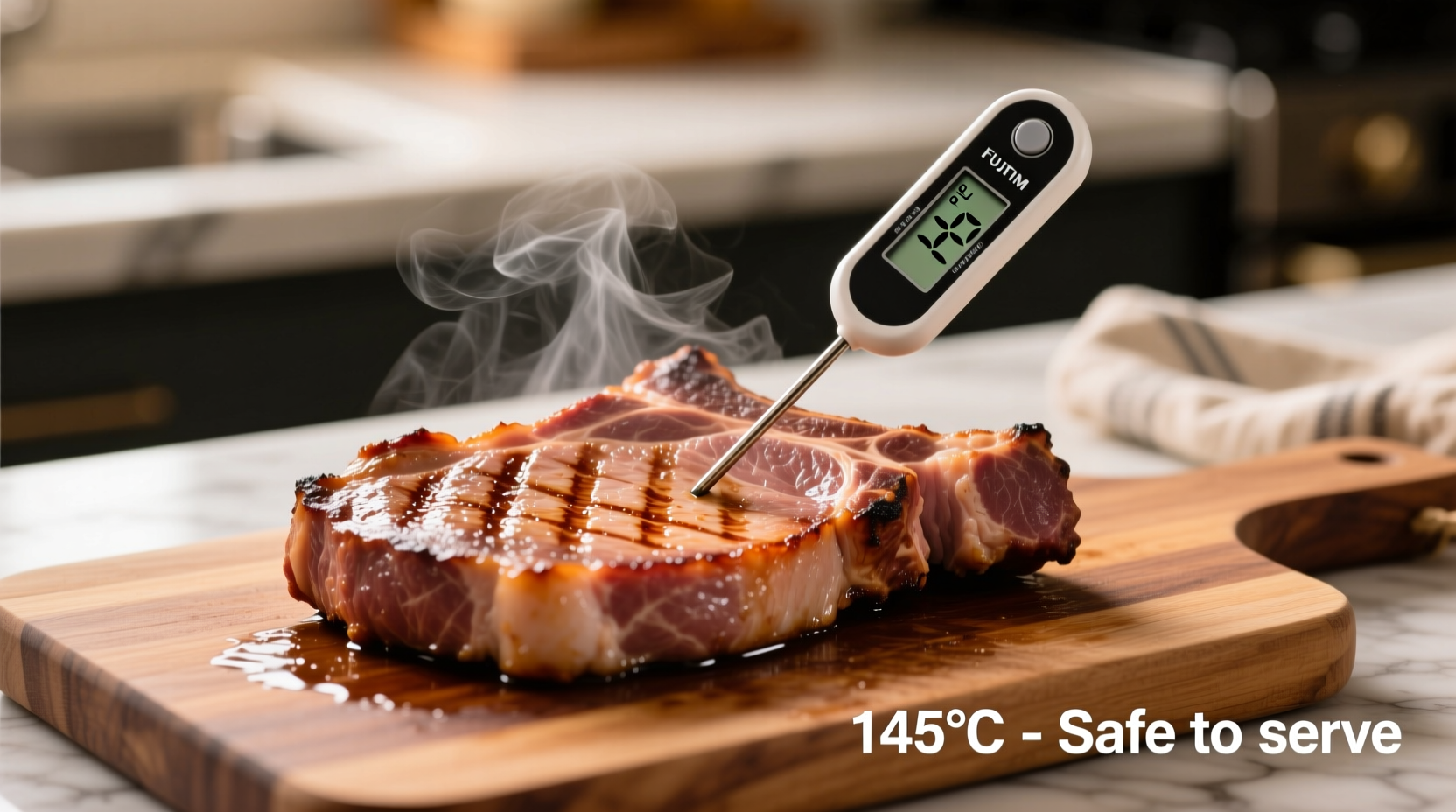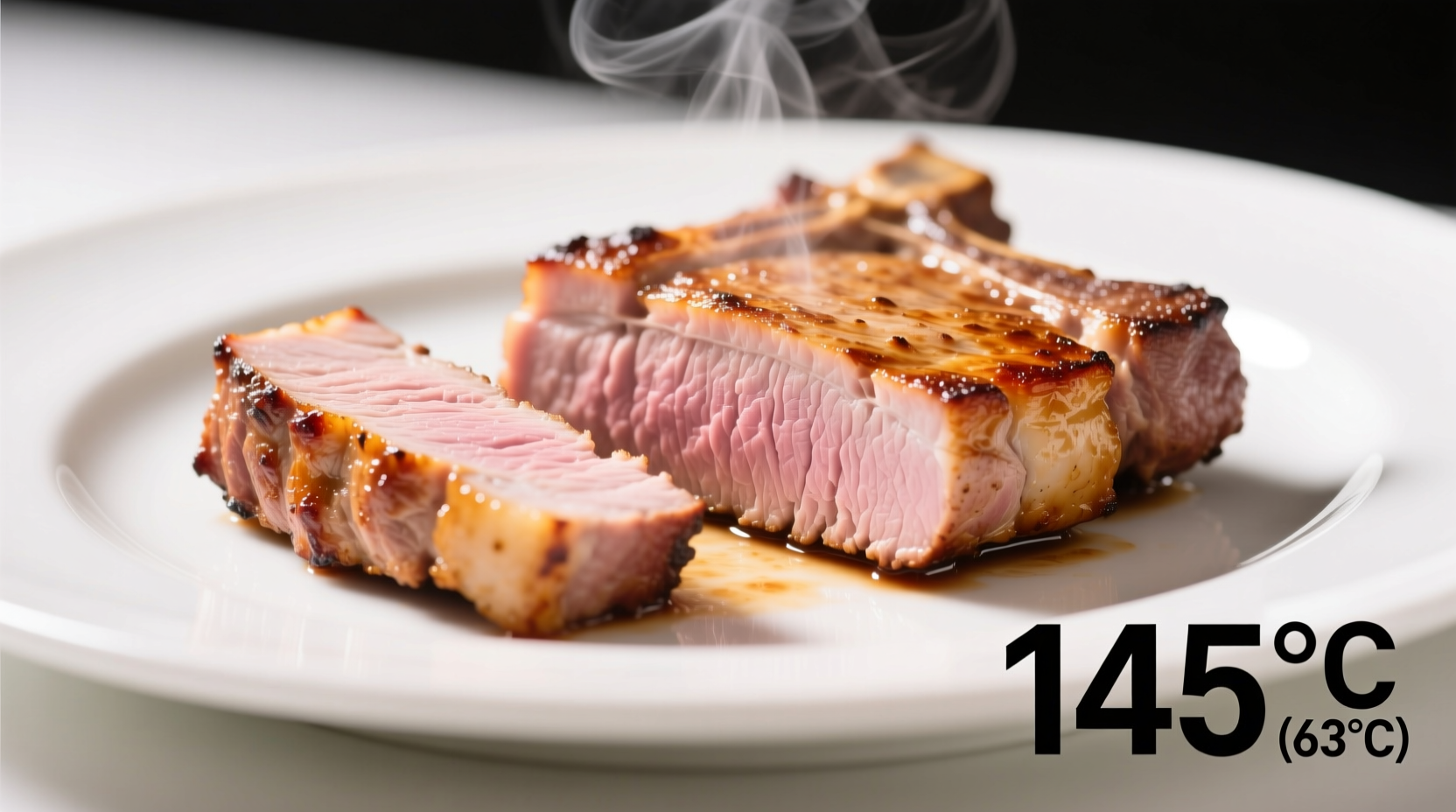For home cooks seeking perfect pork chops, understanding the science behind safe cooking temperatures prevents foodborne illness without sacrificing quality. Many still follow outdated recommendations of 160°F, resulting in dry, overcooked meat. Modern farming practices and updated research have refined our understanding of pork safety, making properly cooked chops both safe and succulent.
The Critical Temperature Threshold Explained
When pork reaches 145°F internally, it achieves the precise thermal point where Trichinella spiralis and other harmful bacteria are eliminated. The subsequent 3-minute rest period allows residual heat to continue working while muscle fibers relax, redistributing juices. This dual requirement—specific temperature plus rest time—represents the current gold standard in food safety science.
| Temperature Guideline | Implementation Year | Scientific Basis | Source |
|---|---|---|---|
| 160°F (71°C) | Pre-2011 | Conservative safety margin | USDA Historical Guidelines |
| 145°F (63°C) + 3-min rest | 2011-Present | Validated pathogen elimination studies | USDA FSIS |
Why Your Thermometer Matters More Than Color
Visual cues like pinkness remain unreliable indicators of doneness. The USDA confirms properly cooked pork may retain a slight pink hue at 145°F without safety concerns. Only an instant-read thermometer provides accurate internal temperature verification. Insert the probe into the thickest part of the chop, avoiding bone or fat pockets, for reliable readings.

Mastering Temperature Across Cooking Methods
Whether pan-searing, grilling, or baking, temperature management follows universal principles:
- Preheat properly: Create an initial sear at 375-400°F before reducing heat
- Monitor continuously: Check temperature 5°F below target to prevent overshooting
- Account for carryover cooking: Temperature rises 5-10°F during resting
- Rest strategically: Tent loosely with foil for exactly 3 minutes
Avoiding Common Temperature Mistakes
Many home cooks encounter issues from misunderstanding thermal dynamics. Thinner chops (under 1”) require vigilant monitoring as they can jump from perfect to overdone in 60 seconds. When using bone-in chops, ensure your thermometer doesn't touch bone, which conducts heat differently than meat. For smoked or slow-cooked preparations, maintain ambient temperatures between 225-250°F to allow gradual, even heating to the target internal temperature.
Special Considerations for Different Chop Types
While the 145°F standard applies universally, thickness and cut affect execution. Rib chops with higher fat content forgive minor temperature variations better than lean loin chops. Blade chops containing connective tissue benefit from slightly higher final temperatures (150°F) to tenderize collagen without drying. Always verify with a thermometer regardless of cut—visual estimation fails 43% of the time according to American Meat Science Association research.
Practical Temperature Verification Protocol
Follow this professional-tested sequence for perfect results:
- Calibrate your thermometer before cooking
- Insert probe horizontally into chop's center
- Check temperature when chop appears nearly done
- Remove from heat at 140°F (accounting for carryover)
- Rest undisturbed for exactly 3 minutes
- Verify final temperature reaches 145°F
When Higher Temperatures Are Necessary
Certain preparation methods require temperature adjustments. For breaded or stuffed chops where fillings contain eggs or dairy, cook to 160°F to ensure safety. When using sous vide, maintain 145°F for at least 26 minutes to achieve equivalent pathogen reduction. These context-specific variations still align with the core safety principle—sufficient heat exposure time at specific temperatures destroys harmful microorganisms.











 浙公网安备
33010002000092号
浙公网安备
33010002000092号 浙B2-20120091-4
浙B2-20120091-4